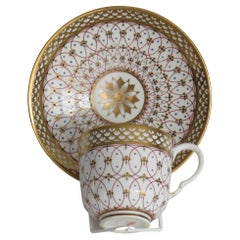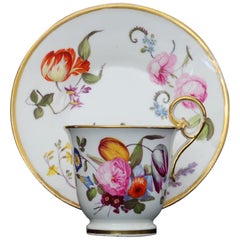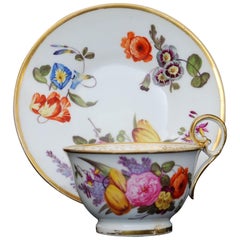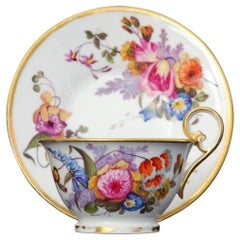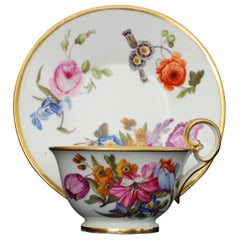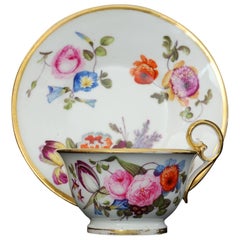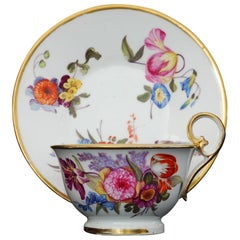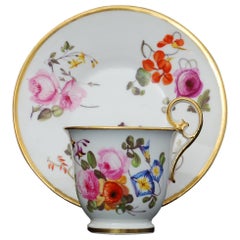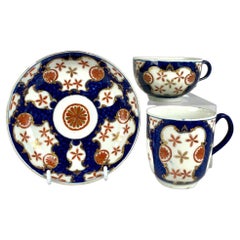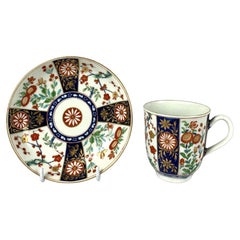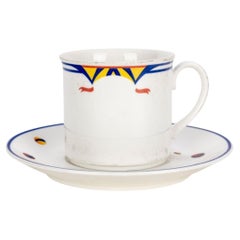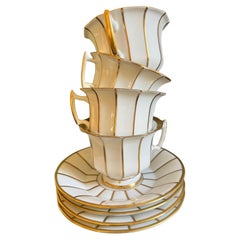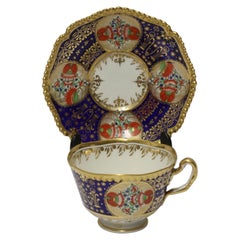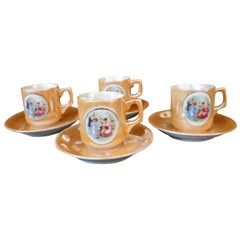Regency Cup And Saucer
Antique Early 19th Century British Regency Porcelain
Porcelain
Antique 1810s Welsh Regency Porcelain
Porcelain
Antique 1810s Welsh Regency Porcelain
Porcelain
Antique 1810s Welsh Regency Porcelain
Porcelain
Antique 1810s Welsh Regency Porcelain
Porcelain
Antique 1810s Welsh Regency Porcelain
Porcelain
Antique 1810s Welsh Regency Porcelain
Porcelain
Antique 1810s Welsh Regency Porcelain
Porcelain
Antique Late 18th Century English Regency Tea Sets
Porcelain
Antique Late 18th Century English Regency Tea Sets
Porcelain
20th Century Luxembourgish Hollywood Regency Tableware
Porcelain
Vintage 1950s Danish Hollywood Regency Porcelain
Porcelain
Antique Early 19th Century English Regency Porcelain
Porcelain
20th Century French Hollywood Regency Tableware
Porcelain
20th Century Luxembourgish Hollywood Regency Tableware
Porcelain
20th Century German Hollywood Regency Dinner Plates
Porcelain
Antique Early 19th Century English Regency Tea Sets
Porcelain
Antique Late 18th Century English Regency Tea Sets
Porcelain
20th Century Greek Hollywood Regency Ceramics
Ceramic
Antique 19th Century Austrian Regency Tea Sets
Ceramic, Porcelain
Antique Early 19th Century English Regency Tea Sets
Porcelain
20th Century Japanese Hollywood Regency Tableware
Porcelain
21st Century and Contemporary French Hollywood Regency Tableware
Porcelain
21st Century and Contemporary French Hollywood Regency Tableware
Porcelain
21st Century and Contemporary Hollywood Regency Platters and Serveware
Porcelain
21st Century and Contemporary French Hollywood Regency Tableware
Porcelain
Recent Sales
Antique 1810s English Regency Porcelain
Porcelain
Vintage 1920s Japanese Hollywood Regency Tea Sets
Porcelain
Antique 1820s English Regency Tea Sets
Porcelain
Antique 19th Century English Regency Porcelain
Porcelain
Antique 1810s English Regency Tea Sets
Porcelain
Antique Early 19th Century British Regency Porcelain
Porcelain
Mid-20th Century Italian Regency Revival Glass
Glass
Antique Early 19th Century English Regency Porcelain
Porcelain
Antique Late 19th Century English Regency Tea Sets
Porcelain
Antique 1820s English Regency Porcelain
Porcelain
Antique 19th Century British Regency Porcelain
Porcelain
Antique 1790s English Regency Tea Sets
Porcelain
Antique 18th Century and Earlier English Regency Tea Sets
Porcelain
Antique Late 18th Century English Regency Tea Sets
Porcelain
Antique Late 18th Century English Regency Tea Sets
Porcelain
Antique 19th Century English Regency Tea Sets
Porcelain
Antique 1820s English Regency Tea Sets
Porcelain
Antique 1810s English Regency Tea Sets
Porcelain
Antique Early 19th Century English Regency Decorative Dishes and Vide-Poche
Porcelain
20th Century Hollywood Regency Porcelain
Porcelain
Antique Early 1800s European Regency Tea Sets
Porcelain
Antique 1810s English Regency Tea Sets
Porcelain
20th Century French Regency Porcelain
Metal
Antique Late 18th Century English Regency Tea Sets
Porcelain
Antique 1820s English Regency Tea Sets
Porcelain
21st Century and Contemporary Japanese Hollywood Regency Serving Pieces
Porcelain
20th Century German Hollywood Regency Tea Sets
Porcelain
20th Century French Hollywood Regency Tableware
Porcelain
20th Century French Hollywood Regency Tableware
Porcelain
Antique 1820s English Regency Ceramics
Porcelain
People Also Browsed
Vintage 1920s Dinner Plates
Porcelain
21st Century and Contemporary Chinese Books
Paper
Antique Mid-18th Century English Georgian Desks and Writing Tables
Mahogany
Antique 19th Century British Georgian Sterling Silver
Sterling Silver
Antique Early 19th Century English Neoclassical Pottery
Stoneware
Antique 1810s American American Colonial Beds and Bed Frames
Brass, Iron
Antique 19th Century Italian Gothic Revival Stools
Upholstery, Wood
21st Century and Contemporary Great Britain (UK) Georgian Fireplaces and...
Marble, Statuary Marble
Antique Early 19th Century English Gothic Revival Musical Instruments
Brass
Antique 18th Century European Gothic Religious Items
Wood
Antique 19th Century European Gothic Revival Wall Brackets
Brass, Metal
Antique Late 19th Century European Gothic Revival Candlesticks
Bronze, Ormolu
Antique 1770s English Chippendale Beds and Bed Frames
Brass
Antique 1860s English Victorian Chandeliers and Pendants
Silver Plate
Antique Late 18th Century English George III Secretaires
Mahogany
21st Century and Contemporary Great Britain (UK) Georgian Fireplaces and...
Statuary Marble, Marble
Regency Cup And Saucer For Sale on 1stDibs
How Much is a Regency Cup And Saucer?
Finding the Right Dining-entertaining for You
Your dining room table is a place where stories are shared and personalities shine — why not treat yourself and your guests to the finest antique and vintage glass, silver, ceramics and serveware for your meals?
Just like the people who sit around your table, your serveware has its own stories and will help you create new memories with your friends and loved ones. From ceramic pottery to glass vases, set your table with serving pieces that add even more personality, color and texture to your dining experience.
Invite serveware from around the world to join your table settings. For special occasions, dress up your plates with a striking Imari charger from 19th-century Japan or incorporate Richard Ginori’s Italian porcelain plates into your dining experience. Celebrate the English ritual of afternoon tea with a Japanese tea set and an antique Victorian kettle. No matter how big or small your dining area is, there is room for the stories of many cultures and varied histories, and there are plenty of ways to add pizzazz to your meals.
Add different textures and colors to your table with dinner plates and pitchers of ceramic and silver or a porcelain lidded tureen, a serving dish with side handles that is often used for soups. Although porcelain and ceramic are both made in a kiln, porcelain is made with more refined clay and is more durable than ceramic because it is denser. The latter is ideal for statement pieces — your tall mid-century modern ceramic vase is a guaranteed conversation starter. And while your earthenware or stoneware is maybe better suited to everyday lunches as opposed to the fine bone china you’ve reserved for a holiday meal, handcrafted studio pottery coffee mugs can still be a rich expression of your personal style.
“My motto is ‘Have fun with it,’” says author and celebrated hostess Stephanie Booth Shafran. “It’s yin and yang, high and low, Crate & Barrel with Christofle silver. I like to mix it up — sometimes in the dining room, sometimes on the kitchen banquette, sometimes in the loggia. It transports your guests and makes them feel more comfortable and relaxed.”
Introduce elegance at supper with silver, such as a platter from celebrated Massachusetts silversmith manufacturer Reed and Barton or a regal copper-finish flatware set designed by International Silver Company, another New England company that was incorporated in Meriden, Connecticut, in 1898. By then, Meriden had already earned the nickname “Silver City” for its position as a major hub of silver manufacturing.
At the bar, try a vintage wine cooler to keep bottles cool before serving or an Art Deco decanter and whiskey set for after-dinner drinks — there are many possibilities and no wrong answers for tableware, barware and serveware. Explore an expansive collection of antique and vintage glass, ceramics, silver and serveware today on 1stDibs.
- 1stDibs ExpertFebruary 22, 2021A demitasse is half the cup of a traditional mug. Demitasses usually come with accompanying saucers.
Read More
How a Craving for Color Revolutionized Glass
After synthetic dyes changed fashion, home goods and printed matter, it was only a matter of time till glass caught up.
1882 Ltd. Looks to the Future of Ceramics in the U.K. with an Eclectic Exhibition and Auction
Faye Toogood and John Pawson are among the list of plate designers.
20 Inviting Dining Rooms Perfectly Arranged for Entertaining
Top interior designers show — and tell — us how to create delectable spaces for hosting dinner parties.
Paul Revere Crafted This Silver Coffee Pot 250 Years Ago
Perhaps best known as a Revolutionary War hero, Revere was also an accomplished silversmith, and this pot is now available on 1stDibs.
From Arne Jacobsen to Zaha Hadid, Top Designers Tackle Tableware
Clever objects like these make feasting even more festive.
How the Chunky, Funky Ceramics of 5 Mid-Century American Artists Balanced Out Slick Modernism
Get to know the innovators behind the pottery countercultural revolution.
Ready for a Cinderella Moment? This Glass Handbag Is a Perfect Fit
Glass slippers might be the stuff of fairytales, but glass handbags? Artist Joshua Raiffe has made them a reality, and they're far less delicate than you might imagine, but just as dreamy.
With Dansk, Jens Quistgaard Delivered Danish Simplicity to American Tables
When a visionary Copenhagen designer teamed up with an enterprising Long Island couple, Scandi-style magic landed in kitchens and dining rooms across the United States.
